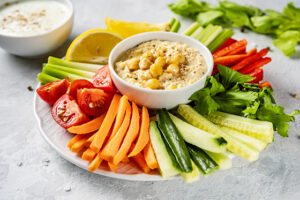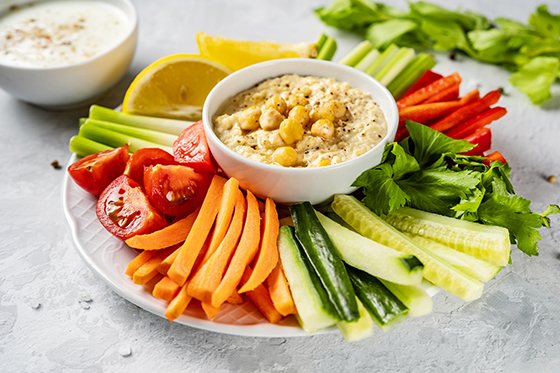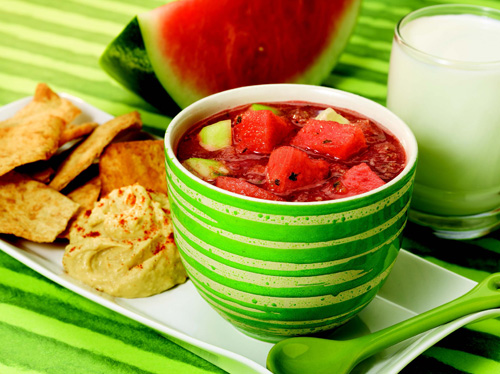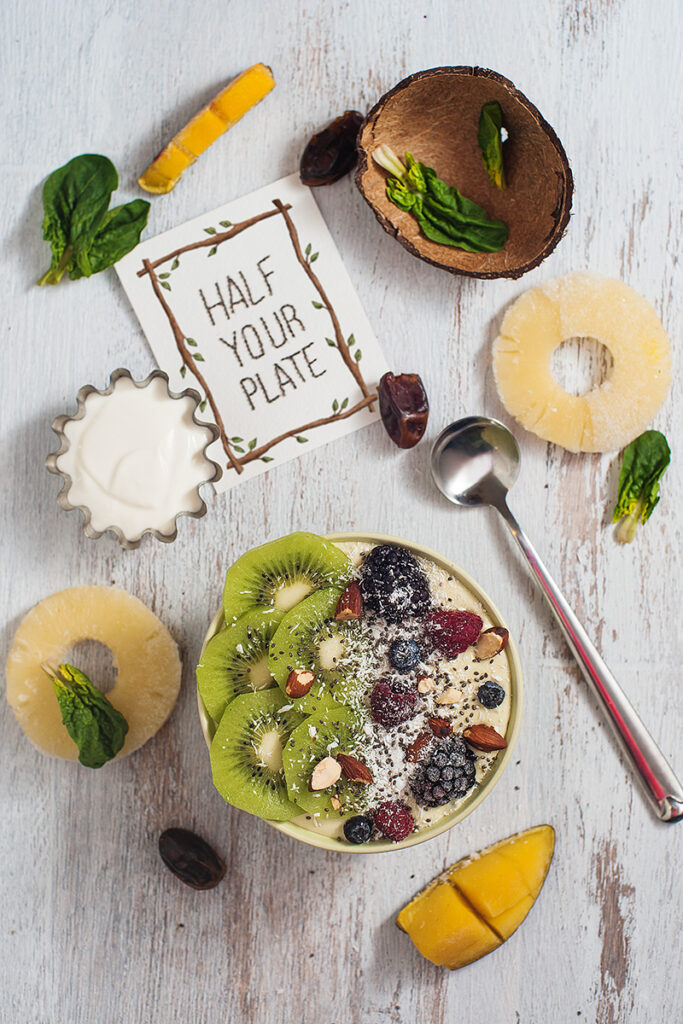by Sarah Remmer, RD
Want your kids to eat more vegetables? You’re not alone. Veggies tend to be the toughest sell, especially with strong-minded picky eaters. But this tip will be a game-changer. It’s backed by research and works like a charm. I can personally vouch for it.
We all know how nutritious vegetables are, full of vitamins, minerals, antioxidants, and fibre—all essential for our health. But we also know that they tend to be rejected the most out of the food groups, especially by toddlers and children who are going through a picky eating phase. For parents experiencing this first off, as a pediatric registered dietitian and mom of 3, I want to assure you that this is very very typical. Most vegetables are bitter-tasting, and because we as humans have a natural affinity towards sweet, carbohydrate-rich foods (because, well… energy and survival), veggies take a back seat when more appealing fare sits beside or around them.
What to do when your child rejects vegetables
Luckily, during these picky eating phases (which by the way, WILL happen), we can turn to other, more accepted foods such as fruit and fortified grain products, to fulfill those nutrient needs. Yes, that’s right – fruit contains very similar nutrients to vegetables! And most kids readily accept a variety of fruit. Phew!
Now, this doesn’t mean that you should stop serving vegetables. Quite the opposite, actually! Children need multiple, non-pressured exposures to foods before they are ready to taste it or consume it. So, what you may assume is a “full-on rejection” might actually be “one step closer to eventually eating it all on their own”. When kids see their parents and siblings happily munching away on raw vegetables or salad multiple times (and they are not feeling pressure to do the same), eventually they’ll dip their toes in the veggie waters all on their own. But this takes patience, compassion, and time.
Focus on the long-game, not the short-game
I always tell parents: when you’re feeding your kids, focus on the long game (their relationship with food long-term), not the short game (I need my kid to eat this now, so that I feel like I’ve done my job). Your job is simply to serve balanced, nutritious meals and snacks at appropriate times and in appropriate places. The rest is up to your kids (whether they eat and how much they eat). This also means continuing to re-introduce foods that were previously rejected, without pressure. I know… this isn’t easy.
The veggie trick that works like a charm
There’s one more tip that I would suggest, and it’s pure GOLD.
Picture this: It’s like clockwork- every evening when I start preparing dinner, my kids run into the kitchen hungry and whiny. Requests for snacks are rampant and there are little fingers dabbling in dinner ingredients all over the place.
When dinner is finally served, like most young kids, they rarely eat a good portion of veggies. The more appealing foods (the entree, starchy sides etc.) is almost always gobbled up, leaving the greens and oranges untouched for the most part. Not only is this frustrating, but it also creates food waste and mealtime battles. Although I try to salvage leftover veggies from my kids’ plates, most of them are too grimy and slimy by the time dinner is over to justify saving them.
Sound familiar?
 Then I tried something, very simple yet genius. One night before dinner, I put out a veggie tray with dip (hummus, Ranch dip and Caesar dip), and said nothing. I simply left them out on the table to see what would happen, then continued to prepare the dinner meal. Before I knew it, my kids are quietly munching away. Wow. Just WOW. Now I do this “veggie tray trick” almost every night and, without fail, my kids swarm it. This trick has been 8 years strong, my friends. Why does it work? Because the veggies are not competing with other, more loved foods. They’re all on their own! And there’s even research to support this little trick of mine.
Then I tried something, very simple yet genius. One night before dinner, I put out a veggie tray with dip (hummus, Ranch dip and Caesar dip), and said nothing. I simply left them out on the table to see what would happen, then continued to prepare the dinner meal. Before I knew it, my kids are quietly munching away. Wow. Just WOW. Now I do this “veggie tray trick” almost every night and, without fail, my kids swarm it. This trick has been 8 years strong, my friends. Why does it work? Because the veggies are not competing with other, more loved foods. They’re all on their own! And there’s even research to support this little trick of mine.
Why the veggie tray trick works:
Data out of Texas A&M University shows that there is an interesting reason why kids (elementary school age) often choose not to eat their veggies at mealtime, thus producing more vegetable food waste afterwards. After analyzing plate waste data from nearly 8,500 students, they found that there’s at least one variable that tends to affect whether kids eat their greens (e.g., broccoli, spinach, or green beans) more than anything: What the veggies are paired with.
They found that when veggies sit next to other more appealing foods – let’s say hamburgers or chicken nuggets – they are wasted more (and the entree is considered more appealing) than if vegetables sit next to less appealing foods such as “steak fingers” or “deli sliders,” wherein more of the veggies are eaten. Clearly, plate food waste is related to food pairings, which makes sense.
Where well-intentioned parents go wrong:
Young kids also can’t grasp the concept of “nutrition” very well. Adults may choose to eat their veggies first, or at least make a point of eating their veggies because they want to improve their nutrition or prevent chronic disease. Not so with kids. When parents try to coax their kids into eating more veggies for the sake of nutrition or health, kids often become even more turned off than before. They often translate this pressure into “these veggies must be even grosser than I thought–why is it such a big deal that I eat them?!” Kids eat for two reasons: 1) they are physically hungry and 2) because a food is appealing to them.
When veggies don’t have to compete with other “yummier” foods, and when there’s no pressure from parents to eat them, they become more desirable and tend to be eaten more. And this is likely why my kids gobble up their veggies when served before dinner – they aren’t competing with any other foods!
Bottom line:
Remember that picky eating phases happen, and that veggie rejection is very typical. What really matters is how you, as the parent, handle this. Continue to serve veggies pressure-free and in a positive way. Serve a variety of fruit every day and other nutritious foods such as fortified whole grains and protein-rich foods at meals and snacks and your child will likely still meet their nutrient needs. And last but not least, test out the veggie tray trick to see if it works with your kids!
About Sarah: Sarah Remmer, RD is an award-winning registered dietitian, and mom of 3. She is the founder and President of the Centre for Family Nutrition, based in Calgary, Alberta, and co-author of Food to Grow On: The ultimate guide to childhood nutrition from pregnancy to packed lunches. You can find hundreds of blog post and recipes geared towards parents and busy families on her blog: SarahRemmer.com



